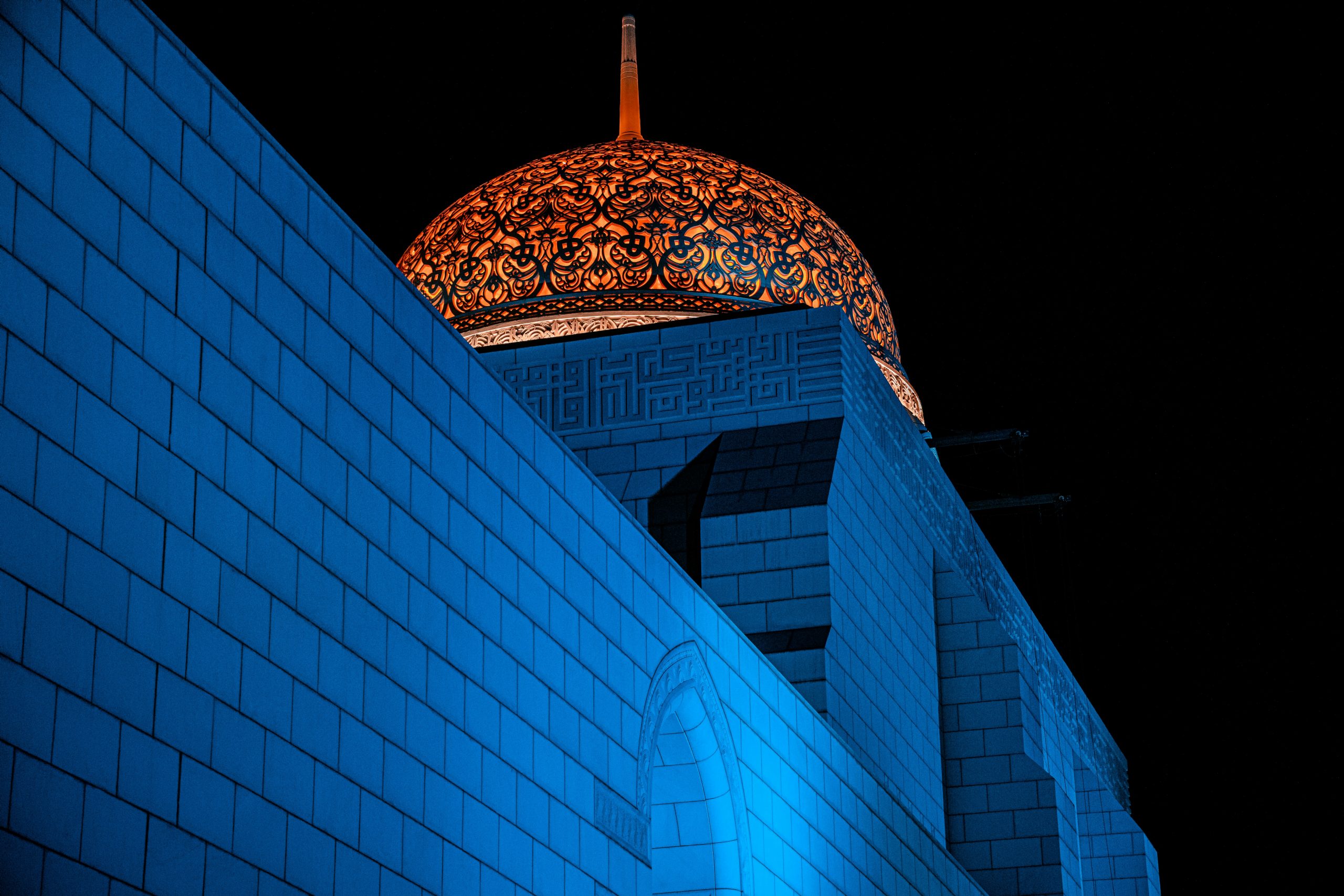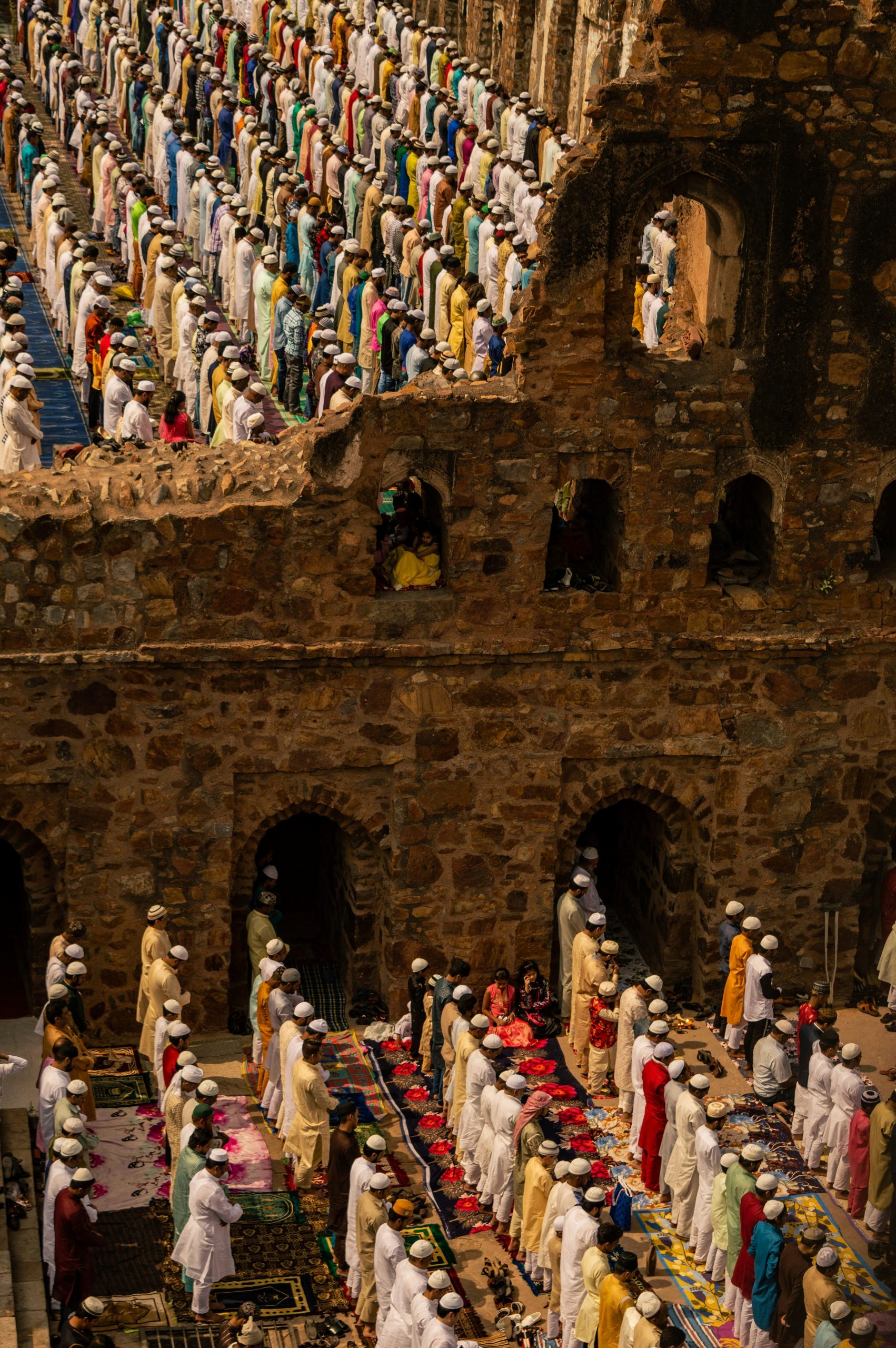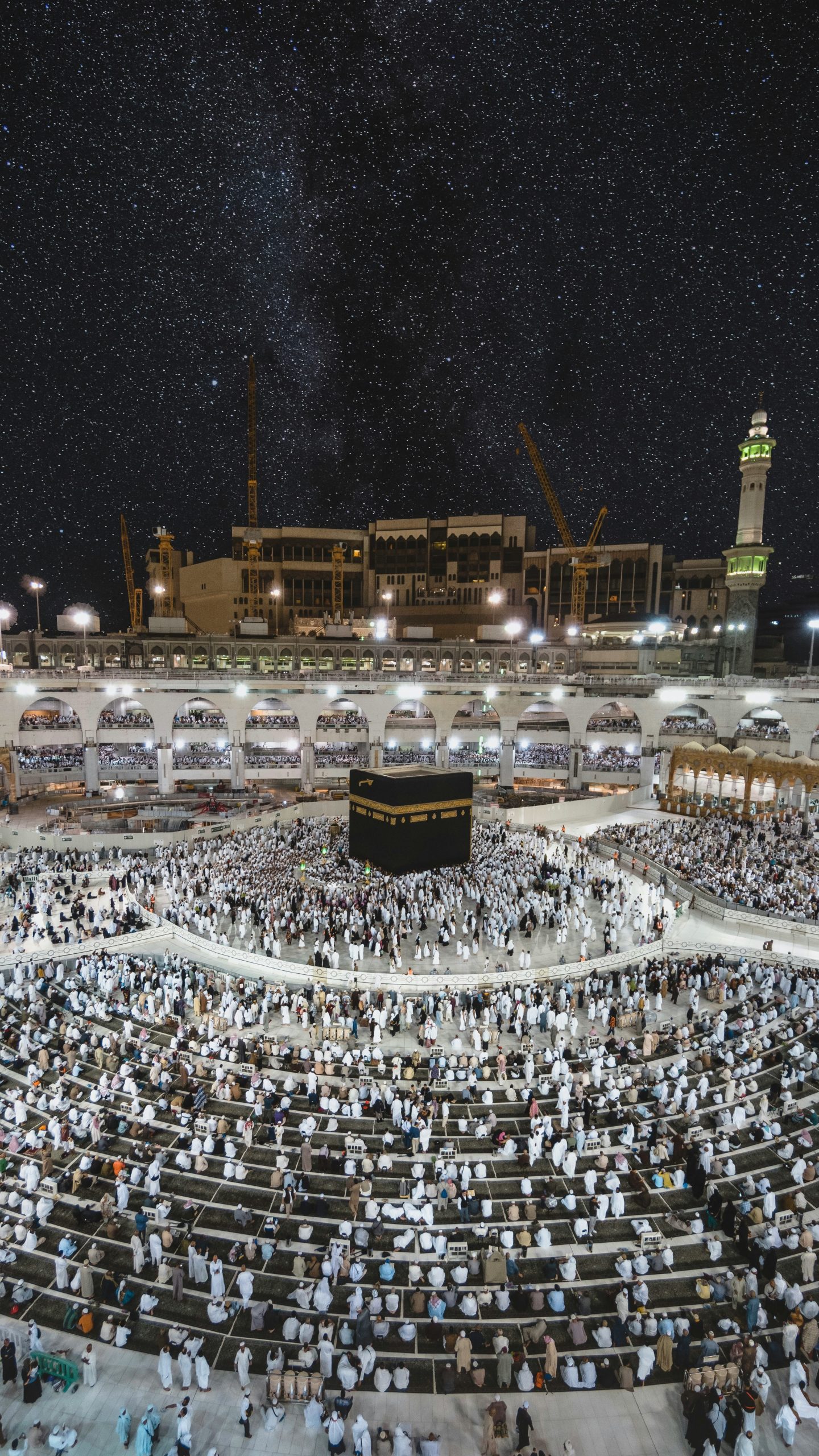#Islam
The Origin And Evolution Of The Taraweeh Prayer
Published

During the month of Ramadan, Muslims worldwide engage in a special night prayer known as Taraweeh. In this article, I will delve into the history of this practice.
As Muslims, we perform the obligatory five daily prayers, with the last one being the Isha prayer. However, we are also encouraged to engage in additional night prayers. While these night prayers are considered voluntary, they are highly recommended.
Allah 

Keep supporting MuslimMatters for the sake of Allah
Alhamdulillah, we're at over 850 supporters. Help us get to 900 supporters this month. All it takes is a small gift from a reader like you to keep us going, for just $2 / month.
The Prophet (SAW) has taught us the best of deeds are those that done consistently, even if they are small. Click here to support MuslimMatters with a monthly donation of $2 per month. Set it and collect blessings from Allah (swt) for the khayr you're supporting without thinking about it.
“They arise from [their] beds; they supplicate their Lord in fear and aspiration, and from what We have provided them, they spend.” [Surah As-Sajdah: 32;16]
And further Allah 

The Messenger’s  Night Prayers
Night Prayers
The Messenger of Allah 


عَنْ أَبي عبدِ الله حُذيفةَ بنِ اليمان، رضي اللهُ عنهما قال: صَلَّيتُ مع النَّبيِّ صلَّى اللهُ عليه وسلَّم ذاتَ ليلةٍ، فافتتح البقرةَ، فقلتُ يركعُ عند المائة، ثم مضَى فقلتُ يصلِّي بها في ركعةٍ، فمَضَى، فقلتُ يركعُ بها، ثم افتتح النساءَ: فقرأها، ثمَّ افتتحَ آل عمرانَ فقرأها، يقرأُ مترسلًا، إذا مرَّ بآيةٍ فيها تسبيحٌ سبَّحَ، وإذا مرَّ بسؤالٍ سألَ، وإذا مرَّ بتعوذٍ تعوَّذَ، ثم ركع فجعلَ يقولُ: « سبحانَ ربي العظيم» فكان ركوعه نحوًا من قيامه، ثم قال: «سمع اللهُ لمن حمِدَه، ربنا ولك الحمد» ثم قام قيامًا قريبًا مما ركع، ثم سجد فقال: «سبحان ربي الأعلى» فكان سجوده قريبًا من قيامه. رواه مسلم.
Hudaifa ibn Alyaman said I prayed one night with the Prophet, peace and blessings be upon him. The Prophet started reciting al-Baqarah and I thought he would stop after 100 verses. But when he went beyond it I thought that he may want to recite the whole chapter in one Rakah. When he finished al-Baqarah I thought he would do Ruku but then he immediately started reciting al-Imran and when he finished he started reciting an-Nisa.
The Prophet was reciting very slowly with enough pauses and would do Tasbeeh (praising God) and Dua (supplication) according to the subject being discussed in the relevant Ayah.
After that the Prophet did Ruku. In Ruku he stayed as long as he did when he was in Qiyam (standing in prayer). After Ruku he stood up for almost the same time and then he performed Sajdah (prostration) and stayed there as long as he recited Quran while doing Qiyam.”
[Hudaifa
, narrated this hadith as in Sahih al Muslim]
Night Prayers in Ramadan at the Time of the Prophet 
During the era of the Prophet 


Abu Salamah ibn ‘Abd ar-Rahmaan, said he asked ‘Aa’ishah 

So Muslims used to pray Isha and after that there was no one unified congregation prayer. Some used to go home and pray there, some would sleep and wake up again to pray at either their home or in the masjid.
This practice remained until one night during Ramadan before the death of the Prophet 





This cautious approach was consistent with the Prophet’s 

So what he 

How Many Rakat Did the Prophet  Pray at Night?
Pray at Night?
As mentioned in a previous hadith by A’isha 




Night Prayers After the Prophet’s  Death
Death
After the passing of the Prophet 
This pattern continued during the time of Abu Bakr 

First Taraweeh at the Time of Omar Ibn Al-Khattab 

PC: Salman Preeom (unsplash)
The decision of the Prophet 

This decision marked a significant shift from the previous practice. The rationale behind the Prophet’s 

Al-Bukhaari narrated from ‘Abd ar-Rahmaan ibn ‘Abd al-Qaari’ that he said: ‘I went out with ‘Umar ibn al-Khattaab (may Allah be pleased with him) one night in Ramadan to the mosque, where we saw the people in scattered groups, one man praying by himself, and another man praying with a group of people following his prayer. ‘Umar said: “I think that if I unite these people behind one reciter, it will be better.” Then he decided to do that, so he united them behind Ubayy ibn Ka‘b.’ [Sahih al-Bukhari 2010]
Imam Attabary, mentioned in his history book, that this happened in the Year 14H around 636 A.D. Then Omar 
Was Taraweeh Invented by Omar?
There might be a misconception among some that Taraweeh prayer was established by Omar ibn Al-Khattab 

After the passing of the Prophet 
Omar ibn Al-Khattab 
The term Taraweeh, derived from the Arabic word “Tarweeh,” meaning ‘rest’, likely came into use during or after the era of Omar 
The names for voluntary night prayers as used in the Quran and hadith are called night prayer (Salat al-Layl), Tahajjud, Qiyam, or Qiyam Ramadan. Taraweeh is the plural of the Arabic word Tarweeh, meaning rest. Worshippers used to engage in extended Rakat and take breaks in between, giving rise to the name Taraweeh.
How Many Rakat Did Muslims Pray at the Time of Omar  ?
?
It was narrated by Imam Malik in his Book al-Moata, that Sayeb ibn Yazeed said that Omar Ibn Al-Khattab 
جاء في موطأ مالك: عن محمد بن يوسف عن السائب بن يزيد أنه قال:” أمر عمر بن الخطاب أبي بن كعب وتميماً الداري أن يقوما للناس بإحدى عشرة ركعة ” قال:” وقد كان القارئ يقرأ بالمئين حتى كنا نعتمد على العصيّ من طول القيام وما كنا ننصرف إلا في بزوغ الفجر “.
Yet in another narration by Abdlrazaq it was said that that Omar Ibn Al-Khattab 
أخرج عبد الرزاق في مصنفه عن داود بن قيس وغيره، عن محمد بن يوسف عن السائب بن يزيد أن عمر جمع الناس في رمضان على أبي بن كعب، وعلى تميم الداري على إحدى وعشرين ركعة يقرأون بالمئين وينصرفون عند بزوغ الفجر
ولمالك في الموطأ عن يزيد بن رومان قال: “كان الناس في زمن عمر يقومون في رمضان بثلاث وعشرين ركعة”
In his book Taraweeh Prayer, Mohamed Diyurahman al-Aazami, said: “The more authentic narration is that Omar ordered Obai Ibn Kaat to lease people with prayer eight Rakat, this is confirmed with the action of the Prophet, peace be upon him.”
It appears from various narrations that initially, Ubayy ibn Ka’b began leading the congregation with eight Rakat. However, over time, they increased the number to twenty Rakat.
While the Prophet 
Ibn Umar narrated that once a person asked the Messenger of Allah about the night prayer. He replied, “The night prayer is offered as two Rakat followed by two Rakat and so on and if anyone is afraid of the approaching dawn (Fajr prayer) he should pray one Raka and this will be a Witr for all the Rakat which he has prayed before. [Sahih al-Bukhari 990]
As of this hadith, the night prayer should be offered on two Rakat followed by two Rakat without specification for a limited number.
From Eight to Twenty
The Sunnah of the Prophet Muhammad 
Contrary to a common modern misconception that eight Rakat is shorter and easier than twenty, historical evidence suggests that the initial understanding was different. Dawood Ibn Al-Husain heard the Aaraj saying: The Imam used to pray Surah al-Baqarah in eight Rakat. If the Imam spread the recitation over twelve Rakat, people perceived it as a lightening of the prayers.
عن داود بن الحصين أنه سمع الأعرج يقول: وكان القارئ يقرأ سورة البقرة في ثمان ركعات، فإذا قام بها في اثنتي عشرة ركعة رأى الناس أنه قد خفف
The essence of following the Sunnah is not merely in adhering to a specific number, but, more importantly, in replicating the profound length and devotion exemplified by the Prophet 
During the time of Umar ibn al-Khattab
, the number of Rakat increased from eight to twenty, not as an attempt to supersede the Sunnah but to accommodate the people’s needs. This adjustment aimed to make the prayers more manageable by introducing shorter Rakat and intervals between them. The name “Taraweeh” itself is derived from the rest or break between these prayers, emphasizing the thoughtful consideration given to the worshipers’ comfort and convenience.
Taraweeh in Makkah and Madina

Makkah (PC: Izuddin Helmi (unsplash)
In the early days, the people of Madina and Makkah both observed Taraweeh prayers with twenty Rakat, taking a break after every four Rakat. However, a unique tradition emerged in Makkah, where during the breaks, worshippers would perform Tawaf around the Ka’abah. Seeking to match this special practice, the people of Madina increased the number of Rakat to thirty-six, replacing the four times of Tawaf with an additional four Rakat for each Tawaf. Imam Nawawi and other scholars have documented this historical development.
Imam Shafi said “I have seen the people of Madina praying thirty-nine Rakat and people of Makkah twenty-three Rakat. All these are fine.” He also said, “If they made the standing longer and Rakat less, this is fine. If they made the Rakat more and the recitation lighter that is also good but the first option is more beloved to me.”
By this time, the common practice across major Islamic cities was to pray twenty Rakat, with the exception of Madinah, where they observed thirty-six Rakat during Taraweeh, and other exceptions where people prayed more or less than twenty Rakat.
Beautiful Voices
Muslims have historically shown a preference for praying behind Imams endowed with beautiful voices and deep concentration in their prayers.
The imams of Taraweeh prayers were not only Hafiz (those who memorized the Quran) but often distinguished scholars and judges. Renowned figures such as Imam Attabary, a great scholar of Tafsir, Imam al-Qurtubi, Sheikh al-Islam Ibn Taymiyyah, and other eminent scholars were known for leading Taraweeh prayers.
In his book “The History of Baghdad,” Alkhateeb al-Baghdadi narrates an incident where Ibn Mujahid, upon hearing Imam Attabari lead Taraweeh in his mosque in Baghdad, remarked to his student, “I didn’t even know that Allah 
Historian Ibn al-Wardi said: “I prayed Taraweeh behind Ibn Taymmiyya and have seen in his recitation such khushu (devotion) and heartfelt emotion that encompasses the hearts.”
Numerous historians and Muslim travelers who journeyed across the world documented the voices of Taraweeh Imams. For instance, al-Hafiz Ibn Hajar, in his book “The Hidden Pearls of the Noble People of the 8th Century,” mentioned Shamsu Deen Azzary Ibn al-Basal al-Muqri, and said about him “He was with a very nice voice and many People would come to him to pray behind him during Taraweeh prayers, and they would crowd in his mosque.
Recent Era
In recent times, a noticeable shift has occurred in Taraweeh prayers, with many Muslims worldwide still observing twenty Rakat. However, there was a notable trend where the length of individual Rakat has become incredibly short, often consisting of just one verse of the Quran. Makkah maintained the tradition of twenty Rakat, but with multiple groups praying simultaneously. Some historians even mention four separate congregations in Makkah, each facing the Ka’bah from a different direction.
In Madina, the practice continued with thirty-six Rakat, occasionally led by multiple Imams and groups simultaneously. This persisted until the Saudi government assumed control of Makkah and Madina, unifying the prayers under one Imam. The Taraweeh prayers were also standardized to twenty Rakat in both holy Mosques.
Across the Muslim world, many mosques adhere to the tradition of twenty Rakat, while others continue with eight Rakat. The variations reflect the diversity of practices among different communities.
Ibn Taymiyyah said “The best approach varies according to the conditions of the worshippers. If they have the endurance for prolonged standing, then performing ten Rakat with three additional ones, just as the Prophet, may God bless him and grant him peace, used to pray for himself in Ramadan and at other times, is considered optimal. However, if they find it challenging, then praying twenty Rakat is better, and this aligns with the practice followed by the majority of Muslims.”
The history of Taraweeh prayer reflects the devotion of Muslim communities and their commitment to do extra night prayers. As we engage in Taraweeh during the blessed month of Ramadan, let us cherish the rich history and traditions that have shaped this special act of worship. May our prayers be a source of reflection, forgiveness, and spiritual growth, embodying the spirit of unity and devotion that has characterized Taraweeh throughout the centuries.
Related:
– The Sacred Elixir: The Night Prayer And The Ordinary Muslim
– 21 Ways to the Sweet Taraweeh
Keep supporting MuslimMatters for the sake of Allah
Alhamdulillah, we're at over 850 supporters. Help us get to 900 supporters this month. All it takes is a small gift from a reader like you to keep us going, for just $2 / month.
The Prophet (SAW) has taught us the best of deeds are those that done consistently, even if they are small. Click here to support MuslimMatters with a monthly donation of $2 per month. Set it and collect blessings from Allah (swt) for the khayr you're supporting without thinking about it.
Brother Abdurahman Idris holds a Bachelor's degree in Islamic Economics and dual Master's degrees in Economics and Higher Education Administration. Currently serving as the Chairman of the Quba Center in Sterling, Virginia, he is deeply rooted in a rich educational lineage, having received guidance from his father, the esteemed Sudanese scholar, Sh. Jaafar Idris. This mentorship underscores Abdurahman's unwavering commitment to preserving and advancing scholarly traditions. Immigrating to the United States in the early '90s, Abdurahman has actively contributed to the Muslim community. He passionately delivers impactful Khutba and lectures, fostering religious awareness. His research interests span Islamic History, Tafsir, and the comparison of Islamic Concepts with contemporary ideologies, reflecting his dedication to exploring the intersections between faith and the modern world.


Nationalism And Its Kurdish Discontents [Part I of II]: Kurds In An Ottoman Dusk

Moonshot [Part 10] – The Marco Polo

Moonshot [Part 9] – A Religion For Real Life

Genocidal Israel Escalates With Assault On Iran

Relief Convoys To Gaza Expose Discrepancy Between Society And State

Moonshot [Part 9] – A Religion For Real Life

Moonshot [Part 10] – The Marco Polo

Moonshot [Part 8] – The Namer’s House

Moonshot [Part 7] – The Abyss Stares Back

Moonshot [Part 6] – Down These Mean Streets

[Dhul Hijjah Series] Calling Upon the Divine: The Art of Du’a (Part 1)

IOK Ramadan 2025: Four Steps | Sh Zaid Khan

IOK Ramadan 2025: Do Your Best | Sh Zaid Khan

IOK Ramadan 2025: Giving Preference to Others | Sh Zaid Khan






